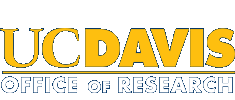Learn About Intellectual Property
Intellectual property is a category of assets created by human intellect that can take many forms such as designs, artwork and more.
Copyrights
Copyrights protect the effort that goes into creating “original works of authorship” and art by providing exclusive rights to the copyright owner (who is not necessarily the author or artist) for a limited, albeit long time. The types of “work of authorship” are very broad – from obvious examples like writings and artwork to others like choreography, web pages, computer programs, databases, architectural drawings and boat hull designs.
Patents
A patent for an invention grants the owner “the right to exclude others from making, using, offering for sale, or selling” the invention or importing the invention into the country where the relevant patent rights exist. Patentable subject matter includes new compounds, methods, plants and software. Obtaining a patent can take many years and significant expense.
Trade and Service Marks
Trademark rights may be used to prevent others from using a “confusingly similar” mark, but not to prevent others from making the same goods or from selling the same goods or services under a clearly different mark. Trademarks which are used in interstate or foreign commerce may be registered with the U.S. Patent and Trademark Office.
Tangible Research Property
Tangible Research Property (TRP) is tangible material produced in the course of research. TRP includes biological materials (e.g., cell lines, plasmids), chemical compounds, physical samples and prototype devices. TRP is separate from intangible property rights (such as patent rights or copyrights). TRP can be the subject of contractual rights embodied in agreements such as Material Transfer Agreements (MTAs). Such agreements can impose limitations on the use or transfer of TRP.
Trade Secrets
A trade secret is information which is not publicly available and which provides the holder with a competitive advantage. Reasonable efforts to maintain secrecy are typically required for enforcement of trade secrets. Trade secrets include inventions, know-how, processes, systems, devices or other confidential information. In the business realm, trade secrets can include customer lists, marketing strategies and manufacturing processes. In the academic realm, trade secrets are less applicable given that publication and information dissemination are key to the academic mission.
Questions?
If you have any questions or if you need additional information, please contact us.

